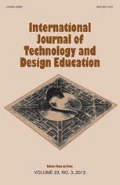Abstract
First year undergraduate design students have found difficulties in realising the standards expected for academic writing at university level. An assessment initiative was used to engage students with criteria and standards for a core interdisciplinary design subject notable for its demanding assessment of academic writing. The same graduate attribute categories linked to assessment criteria and web-based software (REVIEW™) were used for assessing students’ other design assignments. Students engaged with criterion-referenced assessment of an essay exemplar in order to reflect on their own essay writing process. Tutor marking of the exemplar and student essays used a visual mark on a grading scale to reveal the variation between the tutor’s marks and students’ own judgments against each criterion. Data from the software and post-semester focus group discussions and questionnaires showed that the initiative promoted engagement and dialogue between tutors and students and fostered independence and confidence. Results suggest that students’ understanding of the required academic writing standards was improved by this reflective intervention and increased their appreciation that writing and research skills are important attributes for designers.





Similar content being viewed by others
References
Black, P., Harrison, C., & Lee, C. (2003). Assessment for learning: Putting it into practice (p. 135). New York: McGraw-Hill.
Boud, D., & Falchikov, N. (2006). Aligning assessment with long-term learning. Assessment and Evaluation in Higher Education, 31(4), 399–413.
Boud, D. J., Lawson, R., & Thompson, D. G. (2013). Does student engagement in self-assessment calibrate their judgement over time? Assessment and Evaluation in Higher Education, 38(8), 941–956.
Boud, D., & Molloy, E. (2013). Rethinking models of feedback for learning: The challenge of design. Assessment and Evaluation in Higher Education, 38(6), 698–712.
Carless, D. (2006). Differing perceptions in the feedback process. Studies in Higher Education, 31(2), 219–233.
Catt, R., & Gregory, G. (2006). The point of writing: Is student writing in higher education developed or merely assessed? In L. Ganobcsick-Williams (Ed.), Teaching academic writing in UK higher education (pp. 16–29). Houndmills, Basingstoke Hampshire: Palgrave McMillan.
Handley, K., & Williams, L. (2011). From copying to learning: Using exemplars to engage students with assessment criteria and feedback. Assessment & Evaluation in Higher Education, 36(1), 95–108.
Hendry, G. D., Armstrong, S., & Bromberger, N. (2012). Implementing standards-based assessment effectively: Incorporating discussion of exemplars into classroom teaching. Assessment and Evaluation in Higher Education, 37(2), 149–161.
Hendry, G. D., Bromberger, N., & Armstrong, S. (2011). Constructive guidance and feedback for learning: The usefulness of exemplars, marking sheets and different types of feedback in a first year law subject. Assessment and Evaluation in Higher Education, 36(1), 1–11.
Hendry, G., & Tomitsch, M. (2014). Implementing an exemplar-based approach in an interaction design subject: Enhancing students’ awareness of the need to be creative. International Journal of Technology and Design Education, 24(3), 337–348.
Hunter, K., & Docherty, P. (2011). Reducing variation in the assessment of student writing. Assessment and Evaluation in Higher Education, 36(1), 109–124.
Ivanič, R., Richard Edwards, R., Satchwell, C., & Smith, J. (2007). Possibilities for pedagogy in further education: Harnessing the abundance of literacy. British Educational Research Journal, 33(5), 703–721.
Lea, M., & Street, B. (1998). Student writing in higher education: An academic literacies approach. Studies in Higher Education, 23(2), 157–173.
Lillis, T. (2007). New voices in academia? The regulative nature of academic writing conventions. Language and Education, 11(3), 189–199.
O’Donovan, B., Price, B. M., & Rust, C. (2004). Know what I mean? Enhancing student understanding of assessment standards and criteria. Teaching in Higher Education, 9(3), 325–335.
Orr, S. (2007). Assessment moderation: Constructing the marks and constructing the students. Assessment and Evaluation in Higher Education, 32(6), 645–656.
Price, M., Handley, K., Millar, J., & O’Donovan, B. (2010). Feedback: All that effort, but what is the effect? Assessment and Evaluation in Higher Education, 35(3), 277–289.
Rust, C., Rust, M., & O’Donavan, B. (2003). Improving students’ learning by developing their understanding of assessment criteria and processes. Assessment & Evaluation in Higher Education, 28(2), 147–164.
Sadler, D. R. (1987). Specifying and promulgating achievement standards. Oxford Review of Education, 13(2), 191–209.
Sadler, D. R. (1989). Formative assessment and the design of instructional systems. Instructional Science, 18(2), 119–144.
Sadler, D. R. (2005). Interpretations of criteria-based assessment and grading in higher education. Assessment & Evaluation in Higher Education, 30(2), 175–194.
Sadler, D. R. (2010). Beyond feedback: Developing student capability in complex appraisal. Assessment & Evaluation in Higher Education, 35(5), 535–550.
Sadler, R. (1998). Formative Assessment: Revisiting the territory. Assessment in Education: Principles, Policy and Practice, 5(1), 77–84.
Sadler, R. (2007). Perils in the meticulous specification of goals and assessment criteria. Assessment in Education: Principles, Policy and Practice, 14(3), 387–392.
Acknowledgements
Dr. Thomas Lee, Course Director, Faculty of Design, Architecture and Building, University of Technology Sydney (UTS). The authors thank Dr. Lee for facilitating this research and for his contribution to the coordination of the subject used as the basis for this study, and for writing the marker feedback for the mock essay intervention.
Author information
Authors and Affiliations
Corresponding author
Appendix
Appendix
See Table 1.
Rights and permissions
About this article
Cite this article
Aitken, A., Thompson, D.G. Using software to engage design students in academic writing. Int J Technol Des Educ 28, 885–898 (2018). https://doi.org/10.1007/s10798-017-9413-4
Accepted:
Published:
Issue Date:
DOI: https://doi.org/10.1007/s10798-017-9413-4




